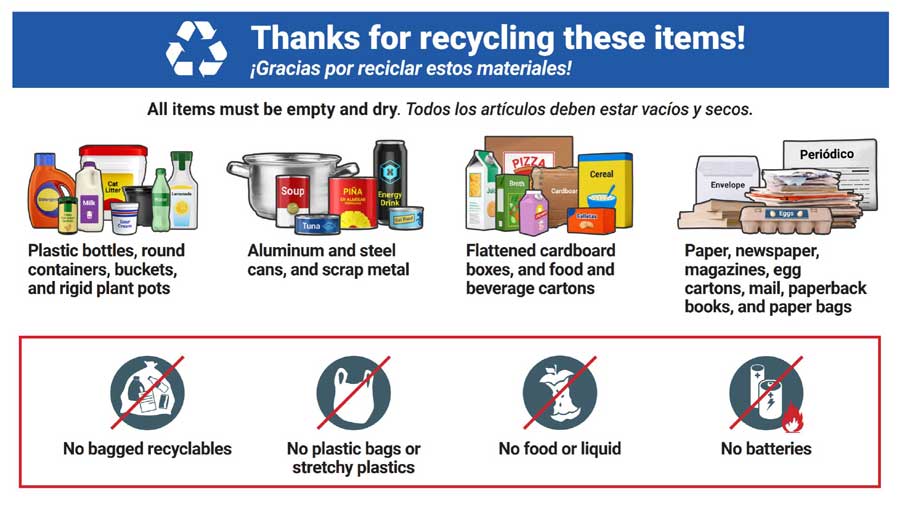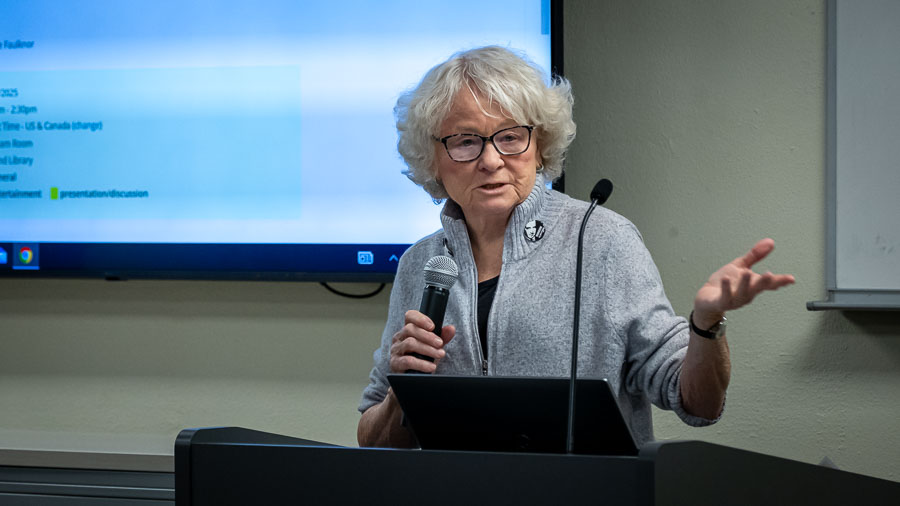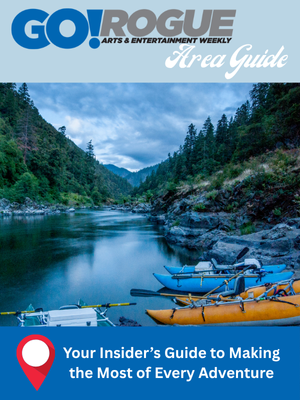Day Tripper: The sparse beauty of the Fort Rock-Christmas Valley Basin
Published 12:00 am Thursday, February 6, 2020

- The edge of the Lost Forest Research Natural Area near Christmas Valley. The ponderosa pine and juniper trees are able to survive here because of the deep sandy soil left from ash and pumice deposits of the Mt. Mazama eruption.
The sun was just breaking through the clouds as we drove toward the imposing Fort Rock. Rising from the bottom of an ancient lake bed, Fort Rock shadows the tiny town of the same name and is a marker for the start of a slice of Oregon unlike any other.
This is the northwestern-most corner of the Great Basin, a 200,000-square-mile area covering Nevada and parts of California, Utah, Wyoming and Oregon.
The landscape here is a stark contrast to the rest of Central Oregon. Instead of lush mountain forests there is a sea of sagebrush and only the occasional juniper tree providing any variation.
Between Fort Rock and Christmas Valley it may not seem like there is much to see, but with a few trips off the blacktop you can find evidence of a vast history, geologic wonders, sand dunes and even a “lost” forest.
Fort Rock
The 200-foot volcanic tuff that seems to sprout from the ground was given the name Fort Rock because of its likeness to a fortress, not because it was used as one.
Indigenous people began moving through the area between 9,000 and 14,000 years ago as evidence found in the nearby Fort Rock Cave and around the basin indicates.
In 1938, University of Oregon archaeologist and anthropologist Luther Cressman led an excavation of the cave after he met local homesteader Hazel Menkenmaier (nee Penrose) who had an interest in the subject and in what the cave might contain.
Cressman and his team then uncovered several sagebrush sandals under a layer of ash left behind from the eruption of Mount Mazama (Crater Lake) that, after several years of debate — eventual radiocarbon dating — would prove to be the oldest footwear ever discovered, dating from 9,000 to 11,000 years old.
More recently homesteaders first began arriving to the area in the late 19th and early 20th centuries, peaking in 1912.
Life was hard for these homesteaders. With little more than sage brush, and with water scarce in dryer months, many called it quits within a few years of staking a claim.
These abandoned homes stood vacant around the basin for decades until 1984 when a group of eight people decided they wanted to preserve the area’s history and began the long process of moving many of these buildings from their original locations to the town of Fort Rock, creating the Fort Rock Homestead Village Museum.
The buildings are now open to visitors seasonally from May through the end of September and hold many items from the turn of the 20th century.
Fort Rock State Natural Area shadows the town and museum that share its name.
Thousands of years ago, this entire basin was covered with a lake that stretched 1,200 square miles. Between 50,000 to 100,000 years ago a volcanic eruption under the lake shot lava in the air and cooled in the form of a tuff ring rising like an island out of the water. Over the course of the next several millennia, waves and wind eroded away the tuff’s southern wall creating an entrance to the basketlike rock.
Eventually the waters of the lake here subsided and the climate changed, leaving the desolate basin and the solitary Fort Rock behind.
Visitors today can hike around the bowl, and eagle-eyed hikers can find social trails that lead to the upper rim of the rock.
It is incredibly quiet in the center of Fort Rock. With such a small and sparsely populated (Lake County comprises about one person per square mile) area and animal life reserved to birds of prey and small, skittish rodents, it remains fairly secluded and serene.
Christmas Valley
Traveling east 30 miles to Christmas Valley, travelers can get a sense of the resolute nature of the people who continue to live out here. Vast fields line the road until the community of Christmas Valley appears.
There has been a small number of families here since the early 20th century, but it was in the 1960s that the community took a turn, for a while anyway.
Real estate developer Penn Phillips bought 90,000 acres of land with the intention of building a kind of resort community for retirees and aspiring farmers from central and Southern California. He divided the land into parcels, built an airstrip, golf course, lake and an A-frame lodge in preparation for the population boom he predicted. While land was purchased, it wasn’t nearly to the extent Phillips had hoped, and by 1973 he abandoned the venture after only 150 people had come to live in his development.
Today there are about 1,300 people living in Christmas Valley (still a far cry from Phillips’ ideal) with a couple cafes and a few shops. The town kept the golf course, lake, airstrip and lodge, which is now a restaurant.
Crack in the Ground
There are a few places in Oregon whose names describe them perfectly, Crack in the Ground is one of them.
It is literally a long crack in the ground.
Crack in the Ground is a volcanic fissure that stems from the Four Craters volcanic field directly to the north and continues 2 miles southeast.
The fissure twists through the earth and in some places is wide enough for a small truck before becoming so narrow you have to contort your body into awkward shapes to squeeze through. The hike can be tricky and at times requires scrambling up and down large boulders or sliding on your rear down to the bottom of one.
There are sections that can reach 70 feet deep, keeping things below ground up to 20 degrees cooler than the surface temperature.
Like the famous (and Instagramable) slot canyons of the Southwest, Crack in the Ground has a similar feel except with darker more jagged rocks and a few stinging nettles to avoid on the hike.
Sturdy shoes and sure footing are required for the majority of the fissure and, because of the nettles, long socks or pants are recommended.
Located 7 miles from Christmas Valley down the gravel (and aptly named) Crack in the Ground Road, look for the large vault toilet and a wide spot in the road for the trailhead.
Note: Google Maps may try and take you on a detour around Christmas Valley; don’t listen to it. It leads to an incredibly washed out farm road that requires slaloming skills to drive down.
Dunes and a lost forest
I have lived in Oregon all my life and seen most of the state (the Owayhee was the last corner I hadn’t explored), but I still had no idea there were sand dunes in Christmas Valley.
The Christmas Valley Sand Dunes OHV area is 30 miles east of town through farmland and down a particularly long stretch of gravel road that is not maintained in winter.
The road is long, and it seems like any other gravel road until, suddenly, massive sandy-white dunes rise out of the sage desert that surrounds them. The dunes take up 11,000 acres, making it the largest inland shifting dune system in the Pacific Northwest and a haven for ATV enthusiasts. During holiday weekends expect to see thousands of OHV’s on the 8,900 acres.
The dunes are made from ash and pumice left by the same eruption that covered the sagebrush sandals at Fort Rock and created Crater Lake.
Nestled beside the dunes is a pine forest.
The Lost Forest Research Natural Area is a ponderosa pine strand left over from a cooler and wetter time when larger forests prevailed in much of the area. It’s able to survive in the arid climate thanks to the deep sandy soil that surrounds it and the trees’ adaptation to the conditions.
The area is largely closed to motor vehicles except for designated roads that twist through. Hiking and camping are allowed in specified areas through these juxtaposing landscapes.
Hole-in-the-Ground
Completing the list of features that are named based on what they look like: Hole-in-the-Ground. It’s hidden off state Route 31 on the way back to La Pine.
This maar volcano about 13 miles west of Fort Rock also was formed under water. The water here was much deeper than its neighbor to the east, forming more of a large crater rather than a fortresslike ring.
There is one sign on the highway that indicates the turn to Hole-in-the-Ground — any other signs off the main road have gone now, so it takes a map and a healthy directional understanding to find it.
Once there, it is surprising how large the mile-wide crater looks, dotted with pine trees on its southern wall.
The area is part of the national forest, so there is a steep road down to the center of the bowl, but I wouldn’t recommend you take your family van or sedan down into it. Instead, stick to the views around the rim.
Further west on Highway 31 is another maar volcano that is bigger with less-pronounced features and closer to the main road called (wait for it) Big Hole. This location has no signs leading to it, so check a map before you go and save the location to your smartphone or GPS.
Don’t blink
The most interesting features in northern Lake County can be hidden down a dirt or gravel road, and they are worth the car wash you’ll need afterward.
Fort Rock acts like a beacon welcoming you to the Oregon Outback, the most prominent feature in the Fort Rock-Christmas Valley Basin and the remains of ancient lakes, volcanic features and human history beyond it that can inspire.
With many of these locations existing off the beaten path with a “blink and you’ll miss it” reputation, it pays to keep your eyes peeled in this breathtakingly sparse section of Oregon.
Fort Rock State Natural Area
67 miles from Bend
Where: off Cabin Lake Road, Fort Rock
Cost: Free
Contact: oregonstateparks.org or 800-551-6949
Fort Rock Valley Homestead Village Museum
Where: 64696 Fort Rock Road, Fort Rock
Cost: $5 adults, $3 children 6-17, free for children 5 and under
Hours: open May through the end of September, 11 a.m.-5 p.m.
Contact: fortrockoregon.com or 541-576-2251
Crack in the Ground
103 miles from Bend
Where: off Crack in the Ground Road, Christmas Valley
Cost: Free
Contact: blm.gov or 541-947-2177
Christmas Valley Dunes and Lost Forest Research Natural Area
92 miles from Bend (via U.S. Highway 20)
Where: off Lost Forest Lane, Christmas Valley
Cost: free for day use, permits required for all OHV use on dunes
Contact: blm.gov or 541-947-2177
Hole-in-the-Ground
60 miles from Bend
Where: off Forest Service Road 220, Fort Rock
Cost: Free










